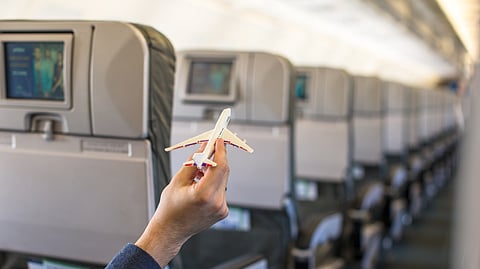IATA Forecasts 8.2 Billion Air Travellers in 2037
The International Air Transport Association (IATA) revealed that present trends in air transport suggest passenger numbers could double to 8.2 billion in 2037.
The latest update to IATA’s 20-Year Air Passenger Forecast, shows that an increasing shift Eastwards in the center of gravity of the industry is behind the continued strong growth.
Over the next two decades, the forecast anticipates a 3.5% compound annual growth rate (CAGR), leading to a doubling in passenger numbers from today’s levels.
The Association warned, however, that growth prospects for air transport, and the economic benefits driven by aviation, could be curtailed if protectionist measures are implemented by governments.
Said Alexandre de Juniac, IATA’s Director General and CEO: “Aviation is growing, and that is generating huge benefits for the world. A doubling of air passengers in the next 20 years could support 100 million jobs globally.
“There are two important things that stand out about this year’s forecast. Firstly, we are seeing a geographical reshuffling of world air traffic to the East.
“And secondly, we foresee a significant negative impact on the growth and benefits of aviation if tough and restrictive protectionist measures are implemented.”
The Asia-Pacific region will drive the biggest growth with more than half the total number of new passengers over the next 20 years coming from these markets.
Growth in this market is being driven by a combination of continued robust economic growth, improvements in household incomes and favorable population and demographic profiles.
The Middle East will grow strongly with a CAGR of 4.4% and will see an extra 290 million passengers on routes to, from and within the region by 2037. The total market size will be 501 million passengers.
IATA: Global Air Cargo Sees July Jump
China will displace the United States as the world’s largest aviation market (defined as traffic to, from and within the country) in the mid-2020s.
The rebalancing of China’s economy towards consumption will support strong passenger demand over the long term.
India will take 3rd place after the US, surpassing the UK around 2024.
Indonesia is forecast to be a standout performer—climbing from the world’s 10th largest aviation market in 2017 to the 4th largest by 2030.
Thailand is expected to enter the top 10 markets in 2030, replacing Italy which drops out of the ranking.
The 3.5% CAGR to 2037 assumes an unchanged policy framework over that period. Policy shifts, however, are likely over time.
Should protectionism continue to expand in a “reverse globalization” scenario, aviation would continue to grow, but at a slower pace and deliver fewer economic and social benefits.
Under a liberalized environment connectivity would generate significantly more jobs and GDP growth.
Read More: Emirates receives IATA Certification for Baggage Operations


